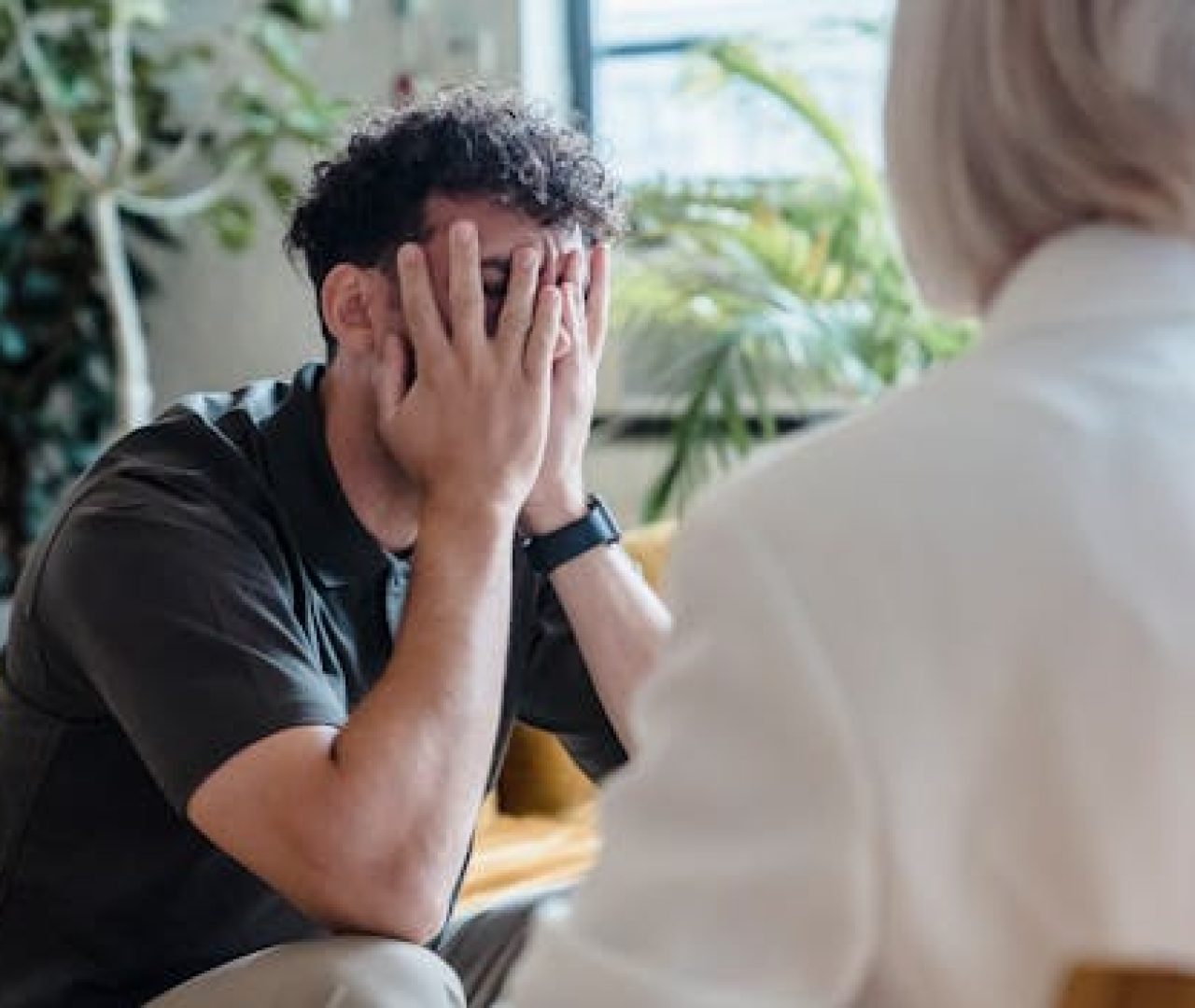Healing from codependency is a journey that involves reclaiming your sense of self and establishing healthier boundaries in relationships. When I first recognized my codependent patterns, I realized how much I had prioritized others’ needs over my own, often at the expense of my emotional well-being. Overcoming this meant learning to identify these behaviors, understanding their roots, and actively working to cultivate independence and self-worth. It’s not just about breaking free from toxic dynamics but also about nurturing a more balanced, fulfilling connection with yourself and others.
As I navigated healing from codependency, I discovered that self-awareness became my anchor. Recognizing the signs of codependency—like excessive people-pleasing or fear of abandonment—helped me make intentional changes. I also found that seeking support, whether through therapy or supportive communities, was crucial. Healing isn’t linear, but with patience and commitment, it’s possible to transform these patterns into healthier relationship habits that honor both your needs and those of the people you care about.
- ✓ Recognize and accept codependent behaviors.
- ✓ Set and maintain healthy boundaries.
- ✓ Prioritize self-care and personal growth.
- ✓ Seek therapy or support groups for guidance.
- ✓ Practice self-compassion throughout your journey.
Post Contents
ToggleUnderstanding the Roots of Codependency
When I first started my journey toward healing from codependency, I realized how little I understood about the origins of this pattern. Codependency often stems from childhood experiences where boundaries were blurred, and emotional needs were unmet or ignored. Growing up in an environment where love was conditional or where caretaking overshadowed self-care can create a deep-seated belief that our worth depends on others’ approval.
Recognizing these early influences helped me see that codependency isn’t just about being “too nice” or overly involved in someone else’s life—it’s a complex coping mechanism that developed as a survival strategy. This insight was crucial in paving the way for genuine healing because it allowed me to approach myself with compassion rather than judgment.
The Importance of Self-Awareness in Healing from Codependency
One of the most transformative steps in my healing from codependency was cultivating self-awareness. This process involves honestly examining my behaviors, emotions, and thought patterns without shame. I started to notice how often I sacrificed my own needs to please others or felt anxious when I wasn’t in control of a situation.
Self-awareness also meant recognizing the subtle ways codependency manifests, such as people-pleasing, fear of abandonment, or difficulty saying no. Through journaling and mindfulness practices, I became more attuned to these patterns as they arose, which empowered me to make conscious choices rather than react automatically.
Techniques to Develop Self-Awareness
To deepen my understanding of myself, I tried several techniques. Mindfulness meditation was especially helpful because it taught me to observe my thoughts and feelings without immediately acting on them. I also found that keeping a daily journal where I reflected on my interactions and emotional responses created a clearer picture of my codependent tendencies.
Another useful exercise was asking trusted friends or therapists for honest feedback. Sometimes, an outside perspective can reveal blind spots we might miss on our own. These practices collectively built a foundation for healing from codependency that felt rooted in truth and self-compassion.
Setting Healthy Boundaries as a Crucial Step Toward Healing
One of the most challenging yet liberating parts of my journey was learning to set healthy boundaries. Codependency often involves blurred lines where your needs are secondary to others’. Establishing boundaries means defining what is acceptable and what isn’t, which is essential for emotional well-being.
At first, setting boundaries felt uncomfortable and even selfish. But over time, I realized that saying no or expressing my limits isn’t about pushing people away—it’s about honoring my own needs so I can have healthier, more balanced relationships.
How to Begin Setting Boundaries
Starting small helped me ease into this practice. I began by identifying situations where I felt drained or resentful and then communicated my limits clearly but kindly. For example, if a friend constantly asked for favors without reciprocating, I would explain that I needed to prioritize my own time.
It’s also helpful to anticipate guilt or fear that might arise when setting boundaries. These feelings are normal but don’t have to dictate your actions. Remember, boundaries are an act of self-respect and a critical part of healing from codependency.
Building Emotional Independence to Support Healing from Codependency
Emotional independence was a breakthrough for me. It means being able to regulate your feelings without relying on others to manage your emotional state. In codependency, there’s often a tendency to look outward for validation or reassurance, which can lead to unhealthy attachments.
Developing emotional independence allowed me to feel more grounded and secure within myself. I learned to identify my emotions, accept them without judgment, and use healthy coping strategies like deep breathing or creative outlets instead of seeking constant approval.
Practicing Emotional Self-Regulation
One practice I embraced was pausing when emotions ran high. Instead of immediately reacting, I gave myself space to breathe and reflect. Over time, this pause became a powerful tool to respond thoughtfully rather than impulsively.
Engaging in activities that nurtured my soul—like reading, painting, or spending time in nature—also enhanced my emotional resilience. These moments of self-care reinforced the understanding that I am responsible for my own happiness, a vital lesson in healing from codependency.
The Role of Therapy and Support Groups in Healing
Seeking professional help was a game-changer. Therapy provided a safe space to explore the complexities of codependency with someone trained to guide the process. A skilled therapist helped me unpack childhood wounds, challenge limiting beliefs, and develop new relational skills.
Support groups were equally valuable because they connected me with others facing similar struggles. Sharing experiences and hearing others’ stories normalized my feelings and fostered a sense of community. This collective healing environment bolstered my commitment to change.
Choosing the Right Therapeutic Approach
There are various therapeutic approaches to address codependency, including cognitive-behavioral therapy (CBT), dialectical behavior therapy (DBT), and psychodynamic therapy. I found CBT especially helpful because it focuses on identifying and changing negative thought patterns that fuel codependent behaviors.
If you’re considering therapy, take time to find a therapist who specializes in relationships or trauma. Their expertise can make a significant difference in your healing journey.
Learning to Cultivate Self-Compassion
One of the most profound lessons I’ve learned in healing from codependency is the power of self-compassion. So often, I was my harshest critic, blaming myself for relationship challenges or feeling unworthy of love. Embracing self-compassion allowed me to treat myself with kindness and understanding, especially when I stumbled.
Self-compassion involves recognizing that imperfection is part of being human and that everyone deserves care and forgiveness, including ourselves. This mindset shift helped me break free from the cycle of self-judgment that perpetuated codependent patterns.
Ways to Practice Self-Compassion Daily
Simple practices like speaking to yourself as you would a dear friend, writing letters of kindness to yourself, or engaging in affirmations helped rewire my internal dialogue. Over time, these small acts of love built a more nurturing inner environment where healing from codependency could flourish.
Reclaiming Your Identity Beyond Relationships
One of the most liberating aspects of healing from codependency was rediscovering who I am outside of my relationships. Codependency often blurs personal identity because so much energy is invested in others’ needs and approval. I had to consciously reconnect with my passions, values, and goals independent of anyone else.
This process involved exploring new hobbies, setting personal goals, and spending time alone to reflect on what truly matters to me. Reclaiming my identity helped me build confidence and a stronger sense of self-worth that didn’t hinge on my relationships.
The Intersection of Codependency and Low Self-Esteem
It became clear that low self-esteem and codependency are deeply intertwined. When I lacked confidence and self-respect, I was more prone to seeking validation through others, which only reinforced unhealthy dynamics. Addressing my self-esteem was therefore crucial for sustainable healing.
If you struggle similarly, you might find Practical Strategies for Overcoming Low Self Esteem Naturally helpful as you cultivate a healthier relationship with yourself.
Navigating Romantic Relationships While Healing
Dating and maintaining romantic relationships during healing from codependency can be tricky. I had to learn to communicate openly about my boundaries and needs, and to recognize red flags early on. This meant slowing down, trusting my intuition, and allowing myself the space to grow independently.
Sometimes, I needed to step back from relationships that triggered old patterns. While difficult, this was essential for protecting my emotional health and reinforcing my commitment to change.
Maintaining Progress and Preventing Relapse
Healing from codependency is an ongoing process, not a one-time fix. I learned the importance of regularly checking in with myself, practicing self-care, and revisiting boundaries as my needs evolved. Sometimes, old habits creep back in, but with awareness and support, it’s possible to course-correct.
Building a strong support network and continuing therapy or support groups helped me sustain progress and deepen my emotional well-being over time.
Additional Resources for Support and Education
If you want to deepen your understanding or find additional support, there are great resources available. For example, you can explore Mayo Clinic Research Articles that provide in-depth analysis of relational health and codependency.
Also, if you’re rebuilding self-esteem alongside healing from codependency, you might appreciate the insights shared in Finding Love After Heartbreak: How to Move Forward Without Fear. This guidance can be incredibly supportive as you navigate both personal growth and new relationships.
- Codependency involves an excessive emotional or psychological reliance on a partner, often leading to unhealthy relationship dynamics.
- Healing from codependency requires recognizing and acknowledging these patterns in your behavior and relationships.
- Setting boundaries is crucial to reclaiming autonomy and fostering self-respect.
- Developing self-awareness through therapy, journaling, or support groups helps identify triggers and underlying issues.
- Practicing self-care and prioritizing your own needs can restore balance and improve emotional well-being.
- Building a supportive network of friends, family, or professionals provides encouragement and accountability.
- Healing is an ongoing process that involves patience, self-compassion, and commitment to personal growth.
Recovering from codependency is a transformative journey toward healthier relationships and a stronger sense of self. By taking intentional steps to understand and change your patterns, you empower yourself to build boundaries and nurture self-love. Reflect on your relationships and consider what changes you can make today to foster your healing and well-being.


















